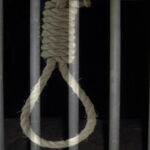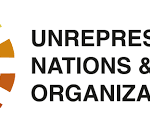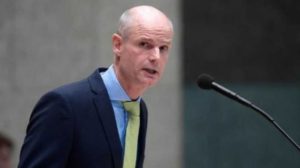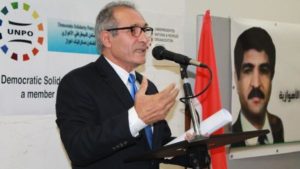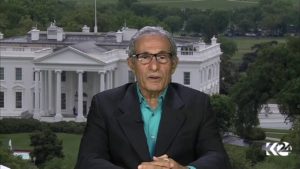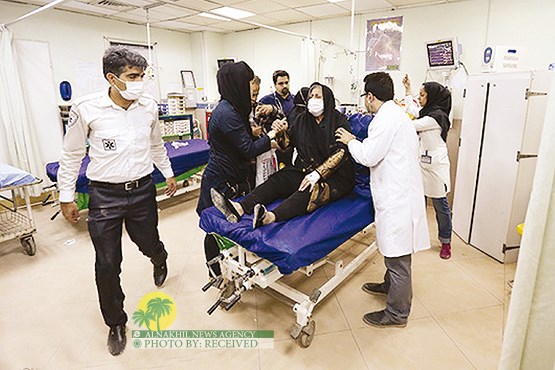Iranian nationalism from the time of Reza Shah has informed the consciousness of the Iranian people and their perception of themselves, both in time and in space.
The Shah constructed this nationalism at a time when Persia’s existence was under threat from outside as well as the trauma of famine, which had caused social collapse.
It was necessary to create a national myth to ensure the survival of modern Iran and that myth necessarily entailed the hatred of Semitic peoples – both Arabs and Jews – and wider xenophobia.
In time, Persians see themselves as linear descendants of ancient cultures that have been threatened by Arabs and what is seen as an Arab religion. In space, they see themselves as threatened by Arabs as rivals, encircled by hostile powers intent on their destruction as a culture.
This has fed into academia and the Persian intelligentsia and in spite of the Islamic Revolution, there is a constant need to put the Iranian nation above the Arab nations. Ahwazi Arabs have paid the price for that national narrative.
After the overthrow of Sheikh Khaza’al – last Arab ruler of Arabistan – by king Reza Shah , the Ahwazi Arab people lost their self government and power in 1925.
Sociologist Turaj Atabaki believes this was a new stage of Iranian nationalism, which he refers to as “ethnic nationalism,” during which pride in the Persian language was emphasized. This form of nationalism was very autocratic, as it considered the state dictatorship a key factor in maintaining national integrity. Additionally, the prevailing elements of this national ideology were both anti-Islamic and anti-Arab.
Like many authoritarian nationalist movements, fear has been the galvinising factor and fear necessarily leads to hatred. Fear of the outsider informed the nationalist narrative that identified enemies within.
From 1925 onwards, this people have suffered national oppression due to political centralisation and the Pahlavi dynasty’s racist nationalism.
Since then, the Arabs have suffered persecution at the hands of successive regimes – Arabs are the feared, reviled and hated historical enemy, according to modern Iranian national narratives.
The anti-Arab narrative was building even before the advent of the Pahlavi regime. The Shanameh is xenophobic in its approach to national myth-making.
Fath – Ali Akhund-zadih was one of the first writers in targeting Arabs. He wrote: “Oh, really Iran. What happened to this great country? Where is her heavenly sovereignty gone? A handful of naked , barefoot , hungry and wild Arabs came to this country and has brought pain and darkness . ”
Aqa Khan Kirmani , a writer who was one of the first adherents of the Bahai faith, described Arabs as “The worst and most evil people. Less worthy even to animals . Because of this people of Iran civilization has been destroyed . ”
Even place names have been Persianised. Arabistan is now officially known as Khuzestan to eliminate its Arab identity.
With Persianisation has come hardship and misery. Discrimination is seen on a daily basis in Iranian literature and among Iranian elites and intellectuals, spread through media and books.
All cultural expression is controlled and repressed by the state. Arabic music, customs, theatre, books and newspapers are all controlled by the Persian state,
Discrimination is institutionalised with less than 20% of top positions in the Arab-majority province going to Arabs with the rest going to outsiders. The region also has the highest rate of executions in Iran. Ahwaz is the most polluted city in the world.
Economically, Ahwazis endure poverty on a par with Africa. The situation is so bad that Iranian media have called it “black poverty”. Poverty in the cities of Arabistan is along racial lines.
Unemployment is recognized as a serious problem among Arabs in the province due to refusal to employ local people in industry. Those in employment struggle with consistent non-payment of salaries and repression of trade unions, which prevents them from organizing collectively.
Arabs endure poor educational attainment. Illiteracy is very high particularly among women. This is due to lack of instruction in Arabic, as mother language, and a high school drop-out rate.
Health statistics show that as a result of poverty caused by discrimination, Arabs are suffering malnutrition and low life expectancy.
However, attempts by the region’s members of parliament to send just 1.5 per cent of oil revenues back to the area to fight social deprivation have been opposed by the government.
Naturally, the impulse is to see independence as the means to break free from national oppression. If remedial rights cannot be attained through the political system, then the secessionists believe it best to leave that system entirely.
They argue, and not without justification, that racism and institutional control by an elite that excludes Ahwazis requires them to seek independence as a remedy for the injustices they face.
Indeed, racism is even more pronounced in the Iranian opposition than in the regime itself, so what hope do Ahwazis have in revolution against the current regime?
The monarchists often openly advocate the genocide of Arabs and the elimination of Arab culture, both in Iran and in what they see as Greater Iran, extending through the Levant to Afghanistan – including Bahrain, Kuwait and the UAE.
I have never seen Persian intellectuals – including Marxists, the Mujahideen, the Liberals and others – put up a challenge to this endemic racism. Iranian political culture deliberately chooses to exclude anti-racism because to fight racism means to destroy the national political narrative on which Iran is based. As such, I can see why Ahwazis would strive towards independence.
But how realistic is independence? The UN Charter states that there is a right to self-determination of all people. However, it has been ambiguous precisely which groups the term ‟people‟ had been envisaged to comprise.
United Nations practice has established the term “people” to refer to colonial populations, underpinning the process of decolonialisation in ascribing a right to independence to former colonial entities. As such, as international legal documents lack guidance on the entity entitled to a right to secession outside the colonial context.
In reality and outside the context of European decolonisation and the collapse of the Soviet Union, independence has been an exception. And these exceptions are the result of lengthy, violent conflicts that have left newly independent states with unimaginable humanitarian crises.
The exceptions include Bangladesh, East Timor, South Sudan, Eritrea and Kosovo. These are economic basket cases. The process of the independence struggle in these countries has caused massive internal displacement, the destruction of infrastructure and huge loss of life. South Sudan was left with just 80km of paved roads and a war-damaged oil industry with no means of export.
And for every South Sudan there are dozens of failed independence struggles: Biafra, Kashmir, Chechnya, Cassamance, Asawad, Western Sahara, Katanga, Punjab, East Turkestan, West Papua, Nagaland, Kachin, Tamil Eelam, Bougainville. All have paid the price in blood, infrastructural destruction and displacement.
Iran would not allow Arabistan or Al-Ahwaz to walk away with independence without destroying the country’s infrastructure and its resources. It would rather massacre Arabs in their millions than allow the prospect of secession. However, there are many Persians who are coming to accept that Arabs suffer persecution and discrimination and that federalism is not an existential threat to them but could regulate and absorb legitimate ethic grievances. This gives us hope.
For the most part, most nations or ethnic groups have had to settle with internal self-determination. This has created opportunities for greater sovereignty without major and long-lasting material damage. The Kurds have negotiated self-government in Iraq and Turkey and are succeeding in Syria, where TEV-DEM leads the way in proposing a realistic and ambitious alternative to ISIS.
Rights can be won even after a long period of oppression, but without the risks of an independence struggle. However, it is up to Ahwazis – not me and not the international community – to come to a judgement. I only offer my thoughts to the Ahwazi national debate in a spirit of friendship.

